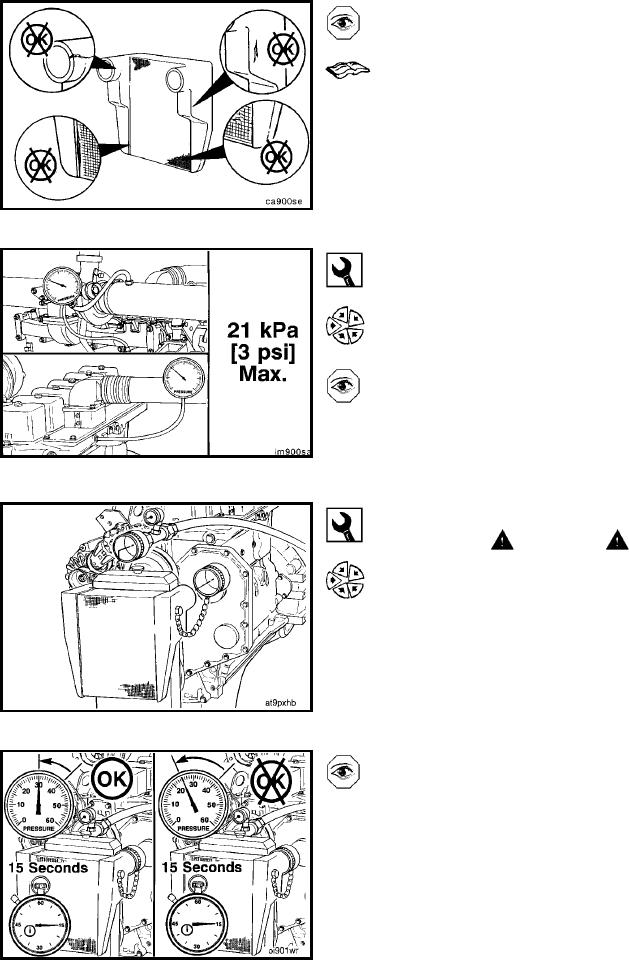
TM 5-2420-230-24-2
Charge-Air Cooler (CAC) (010-027)
B3.9 and B5.9 Series Engines
Page 10-24
Section 10 - Air Intake System - Group 10
Inspect the charge air cooler for cracks, holes, or damage.
Inspect the tubes, fins, and welds for tears, breaks, or other
damage.
Refer to Section A for the leak check procedure.
Pressure Test (010-027-013)
Pressure Gauge, Part No. ST-1273
Install pressure gauge, Part No. ST-1273, to the fitting in
the turbocharger outlet.
Install another pressure gauge, Part No. ST-1273, in the
intake manifold.
Operate the engine at rated rpm and load. Record the
readings on the two gauges.
If the differential pressure is greater than 21 kPa [3 psi],
check the charge air cooler for plugging. Clean or replace
if necessary.
Differential Pressure:
21 kPa
[3 psi]
Leak Test (010-027-014)
WARNING
To avoid possible injury from either plug blowing off
during the test, secure the safety chains on the test
plugs to any convenient capscrew on the radiator as-
sembly. This test must be performed with securely fas-
tened safety chains.
Charge-Air-Cooler (CAC) Test Kit, Part No. 3824556
Install a cap over the outlet side of the charge air cooler
(CAC). Install a pressure gauge, air supply, and air pressure
regulator to the inlet side of the cooler.
Apply 207 kPa [30 psi] of air pressure to the charge air
cooler (CAC). Close the air pressure regulator.
Monitor the pressure gauge and determine the rate of
pressure decay with a stopwatch.
If the pressure decay is 49 kPa [7 psi] or less in 15 seconds,
the cooler is okay. If the pressure drop is greater than 49
kPa [7 psi] in 15 seconds, check all connections again.
Determine if the pressure decay is caused by a leak in the
charge air cooler (CAC) or from a leaky connection. Use a
spray bottle filled with soapy water applied to all hose
connections, and watch for bubbles to appear at the loca-
tion of the leak.
L-1148

